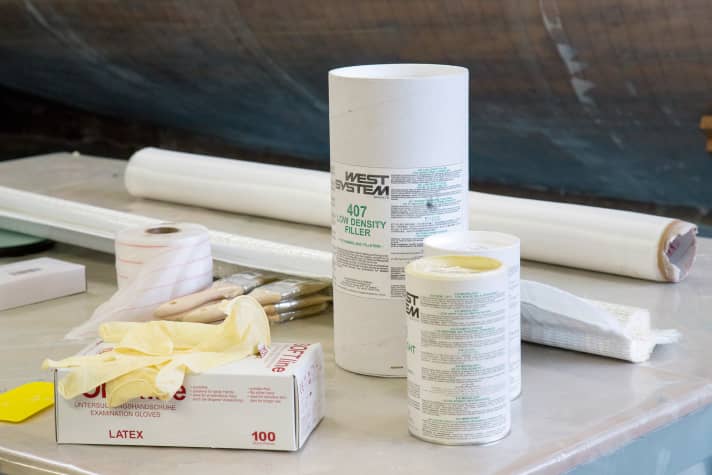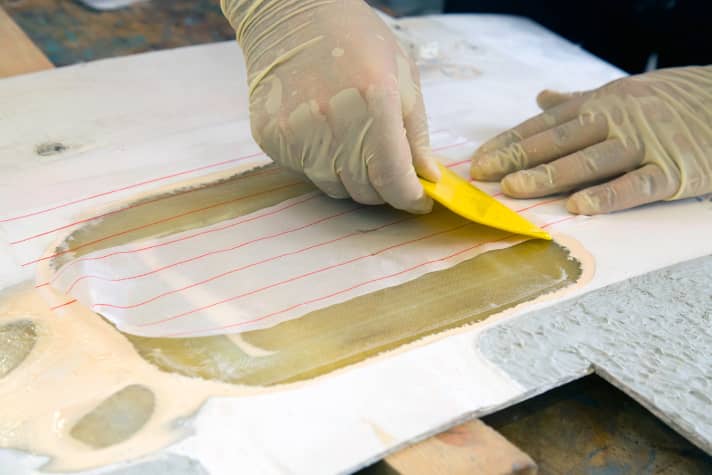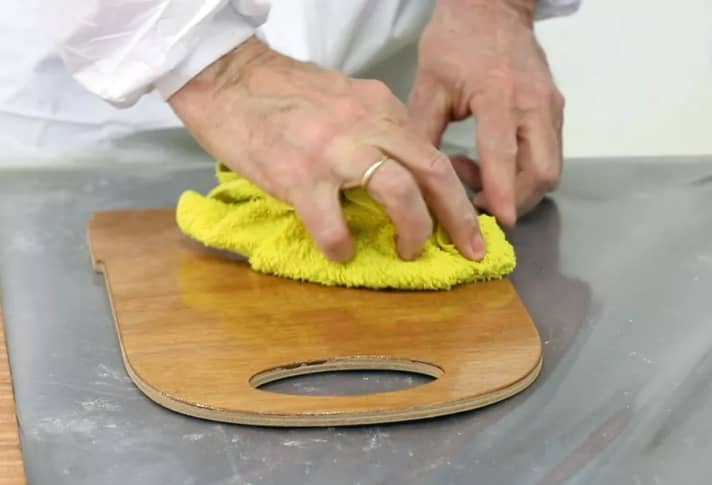
The contents of this special
- Part 1: Basics of the miracle resin
- Part 2: Which resin for which purpose?
- Part 3: Coating, coving, holes
- Part 4: Tubes, fillers, beams, fittings
For professional users, the market offers an almost overwhelming selection of epoxy resins. In addition, there are so-called bio-epoxies such as the Entropy series from West System, in which some of the carbon compounds usually obtained from crude oil are extracted from linseed or waste products from biofuel production. Currently, around 30 to 40 per cent of the resin-hardener system can be produced without fossil raw materials. The bio-resins are technically on a par with the best standard products, but cost around 15 per cent more.
Private users are best served by universal systems such as the 105 series from West System. They are essentially the basic chemistry kit for boat hobbyists and can be adapted to the working conditions by selecting the hardener. The ambient temperature and the desired processing time are the key factors here.
If structural bonds or reinforcements are to be produced, fillers and glass fibre come into play, as the strength of the resin alone is not sufficient. Epoxy is not very picky when it comes to reinforcing fibres. Depending on the desired properties, the resin can be processed with glass, aramid or carbon fibres. However, materials that currently seem more exotic, such as flax or basalt, can also be combined well with epoxy.
Do not use mats
In contrast, the classic standard mat from the polyester accessories is unsuitable. It consists of relatively short glass fibre sections that lie on top of each other in a disorderly manner. To prevent the approximately 6.5 centimetre long glass filaments from falling apart when dry, they are glued together with a so-called binder. As long as you are working with polyester, this is not a problem because the binder is dissolved by the styrene and the resin can enclose the fibres. With epoxy, the binder does not dissolve, which is why the resin cannot soak the mat properly and no strong bond is created.
Epoxy should therefore always be combined with fabrics or scrims. In the latter case, the fibre strands are held together by warp threads so that no chemical binder is required.
Basics of epoxy processing 2
Occupational safety with epoxy resin

Epoxy resins hardly evaporate any solvents, so respiratory protection is not absolutely necessary when mixing and working in large rooms. Gloves and overalls are essential, however, as contact with the skin should be avoided. If contamination does occur, do not use solvents! They do more harm to the skin than good. It is better to wash off the fresh resin immediately with soapy water. Tip: Wear two pairs of gloves on top of each other so that the contaminated outer layer can be changed quickly and easily when working. Always wear respiratory protection when sanding epoxy.
Tear-off fabric

The fabric is applied as the final layer when laminating or gluing. It is made of nylon and is impregnated with a release agent so that it does not bond with the resin or the laminate. After curing, it can be removed (torn off) relatively easily. It fulfils several tasks. Excess resin is absorbed by the fabric. It also ensures an even laminate surface. The dreaded amine redness also disappears when it is torn off. Cleaning is not necessary; work can continue immediately without intermediate sanding.
Amine blush

During the curing of epoxy resins, a waxy layer can form on the surface. This is a reaction residue of the hardener, which mainly occurs at high humidity and low ambient temperatures. Depending on the hardener and climate, the appearance can range from almost invisible to a dull and greasy surface. Amine reddening becomes a problem during further processing. When sanding, the paper becomes clogged extremely quickly and practically slips off. Furthermore, the wax layer can severely hinder the adhesion of epoxy resin, lacquers or primers. The formation of the residue can hardly be avoided, especially when working outdoors or indoors. However, there are two ways to get round the problem: Either wash the laminate with lukewarm soapy water and a scouring pad and then dry the surface with paper towels. Or you can use peel ply as the final layer.
We continue in part 3
The videos of the series:
Part 1: Laminating, repairing, bonding or coating ... Many things are possible with epoxy resin. We therefore spent a few days at the Von der Linden GmbH workshop and asked Helge von der Linden everything we ever wanted to know about this miracle resin. In the first part of our new series, we start with the basics and then Helge shows us how to coat wooden surfaces with epoxy resin. A complete free workshop for all owners!
Part 2: The second part of our epoxy guide series is about the frequently used ability of epoxy resin: laminating. Whether it's repairing holes in GRP or tightening loose bulkheads - after this video tutorial, anyone can draw fillets and laminate!
Part 3: The third part of our epoxy resin guide series on YACHT tv is all about fillers and repairing carbon fibre and soft GRP decks. With this knowledge, anyone can lend a hand, because working with epoxy resin is not rocket science. Expert Helge von der Linden shows the repairs step by step.
Part 4: After coating, repairing and laminating, the last part is about filling ... This type of repair is particularly necessary for minor damage to GRP. Helge also shows us his favourite use of epoxy: gluing in fittings. We tested the forces up to which something like this really holds.

